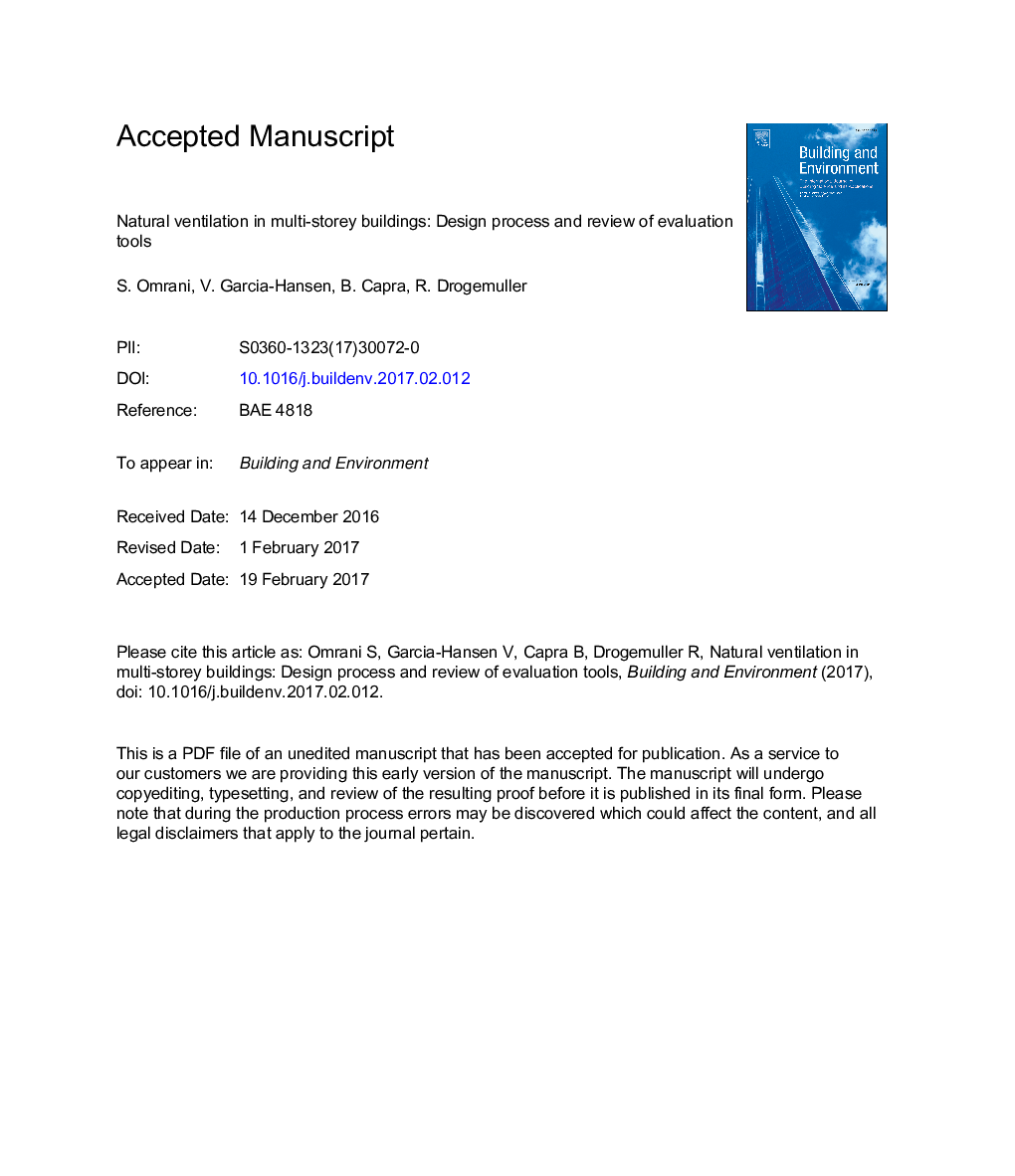| Article ID | Journal | Published Year | Pages | File Type |
|---|---|---|---|---|
| 4917374 | Building and Environment | 2017 | 43 Pages |
Abstract
Energy demand in cooling-dominant climates can be reduced by implementation of natural ventilation as a passive cooling strategy. Accordingly, suitable evaluation and prediction tools are requirements for effectively introducing natural ventilation in building design. In addition, the rapid emergence of multi-storey buildings can accelerate energy consumption, especially in cases of inappropriate building design. This study, therefore, proposes a process model for the better integration and evaluation of natural ventilation design into the overall building design process for multi-storey buildings. To achieve this, available methods of natural ventilation evaluation were identified through a literature review and classified into three main categories: analytical and empirical methods, computational simulations, and experimental methods. Strengths and limitations of each method are then evaluated with regards to accuracy of the results, cost, applicability to complex geometries, resolution of results, and time cost. Finally, a process model was proposed based on the methods' advantages and limitations, as well as needs of each design stage and recommends the most suitable integration of natural ventilation evaluation methods into the overall design process.
Related Topics
Physical Sciences and Engineering
Energy
Renewable Energy, Sustainability and the Environment
Authors
S. Omrani, V. Garcia-Hansen, B. Capra, R. Drogemuller,
